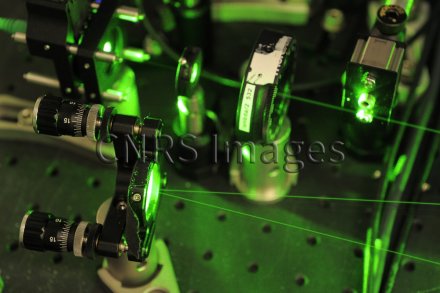Production year
2010

© Benoît RAJAU/CNRS Images
20100001_0705
Laser pour piéger les atomes dans un réseau optique. Vue détaillée de l'injection du faisceau laser dans une fibre optique monomode. Le réseau optique est obtenu en faisant se croiser plusieurs faisceaux issus d'un même laser (ici un laser vert à 532 nm). Les franges d'interférence, créées dans la zone d'intersection des faisceaux, forment un potentiel lumineux périodique (réseau optique) dans lequel les atomes sont régulièrement arrangés. Ce dispositif permet l'étude de condensats de Bose-Einstein.
The use of media visible on the CNRS Images Platform can be granted on request. Any reproduction or representation is forbidden without prior authorization from CNRS Images (except for resources under Creative Commons license).
No modification of an image may be made without the prior consent of CNRS Images.
No use of an image for advertising purposes or distribution to a third party may be made without the prior agreement of CNRS Images.
For more information, please consult our general conditions
2010
Our work is guided by the way scientists question the world around them and we translate their research into images to help people to understand the world better and to awaken their curiosity and wonderment.